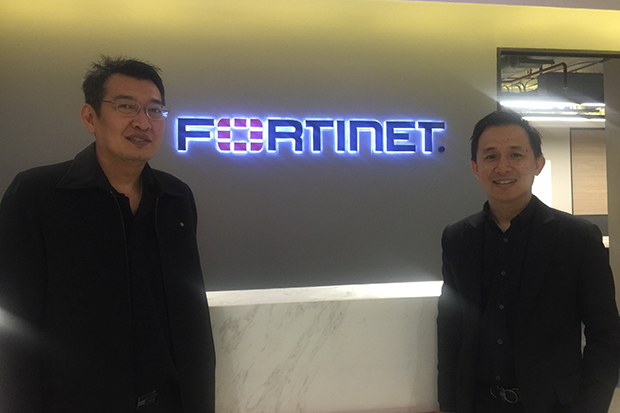
Thailand's cybersecurity market growth next year will lag behind that of its Asean neighbours as its investment in the sector remains low.
"We project local cybersecurity spending to grow by 17% to US$68 million in 2017," said Peerapong Jongvibool, vice-president of Fortinet Inc, responsible for Southeast Asia and Hong Kong.
Thailand is not a large market, but it's a high-growth market, he said.
Global research firm Frost & Sullivan reported Thailand is the fifth-largest market in Southeast Asia and Hong Kong, behind Singapore, Hong Kong, Malaysia and Indonesia.
To capitalise on the growth potential, Mr Peerapong said Fortinet plans to spend 10 million baht to open a solution centre to provide real-configured advanced cybersecurity threat prevention systems.
Fortinet also plans to increase its workforce in Thailand by 15% in order to gain more customers, targeting the country's top 10 organisations in the government, education, telecom and financial service sectors.
He said telecom still has plenty of room to grow thanks to 4G wireless technology that requires network resources to support more simultaneous mobile connections.
The financial services sector also shows strong potential as the industry moves towards digital payment systems, Mr Peerapong said.
Wittaya Janmayka, network security architect of Fortinet Thailand, said the country is among the global leaders for malware infections, particularly ransomware with which hackers access victims' computers to lock down or encrypt data, demanding monetary payments to unlock or decrypt the data.
"Several reports have estimated ransomware attacks will cost victims a total of US$1 billion in 2016 globally," he said. That cost is expected to increase exponentially in 2017.
Ransomware is expected to affect higher-profile victims such as healthcare organisations, celebrities, political figures and large companies, rather than simply business data of manufacturers or exporters, Mr Wittaya said.
He said future cyberattacks will not only be more frequent, but also bigger and more sophisticated.
As the Internet of Things (IoT) becomes more interwoven into society, hackers will exploit weaknesses in the IoT communications and data-gathering chain to hack IoT devices.
IoT devices will become increasingly targeted for attacks. It is projected there will be 20 billion IoT-connected devices by 2020, versus 1 billion personal computers.
Mr Wittaya said autonomous malware will begin to behave like a human attacker performing reconnaissance next year, identifying targets, choosing methods of attack, and intelligently evading detection.
This new generation of malware will be situation-aware, meaning it can understand its environment and make calculated decisions about what to do next, he said.
For instance, hackers installed malware in the Bangladesh Central Bank's computer systems and watched, probably for weeks, about how to go about withdrawing money from its account.